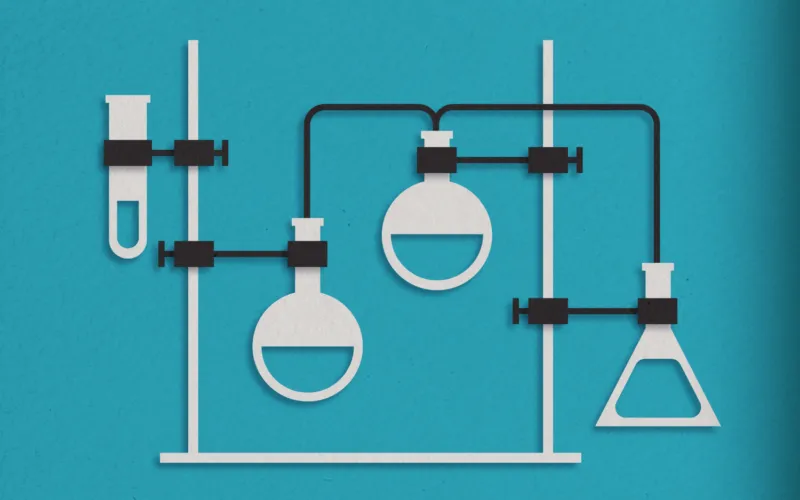Restoration of Australian patent rights - a generous regime
Invariably a loss of rights in a pending application or a granted patent is caused by not taking a timely action. Of course deliberately not taking an action so as to cause a cessation of rights is often used as a mechanism to abandon a patent/application. This being preferred over an action to positively withdraw an application or surrender a patent.
Here we are concerned with the alternative, that is, the inadvertent loss of rights arising out of the failure to take a timely action. In general terms, Australian patent law provides a remedy by permitting an applicant or patentee to obtain an extension of time within which to take the omitted action. This remedy is also available where the loss of rights arises out of a failure by the Australian Patent Office.
The basis for an extension of time
Section 223 of the Patents Act 1990 provides that an extension will only be available if the failure to take the required action was caused by either an error or omission or by a circumstance beyond the control of a person concerned with the matter. This latter circumstance may be regarded as a force majeure provision.
It has been well established by the case law that this provision is discretionary. It is not “of right” unlike, for example, an extension of time to pay a renewal fee in the six month grace period. Consequently there is a strict approach taken in determining if Section 223 is satisfied.
In order to exercise the discretion in favour of an applicant, there is a requirement for the person concerned to provide a “full and frank disclosure” of all of the circumstances relevant to the extension.
Identifying the error or omission
A thorough review of the steps taken by all relevant persons will usually identify the error or omission. In our experience, quite often there is more than one error typically because the usual procedure was not followed. That is, there is frequently a compounding of errors.
For example, suppose that the due date for requesting examination has been entered into a docketing system incorrectly such that the docketed date is past the actual due date. Clearly the person entering the date made a causative error. However it would be quite unusual for there to be no checking of this date given its critical nature. In identifying all causative errors, one would need to investigate the checking procedure and importantly, why the erroneous date was not noted and corrected.
Causation
Whatever the nature of the error(s) or omission(s) they must result in the failure to carry out the required step. It therefore follows that the error(s) or omission(s) must have occurred before the relevant due date.
For example, suppose a PCT applicant decides to enter the Australian national phase in advance of the normal 31 month deadline but the applicant’s IP manager inadvertently omits to instruct its Australian attorney to file the application. An extension of time in these circumstances ought to be allowable because the IP manager’s error was causative of the failure to timely enter the Australian national phase.
Accordingly, it is important to identify the intention on the part of the applicant and the timing of that intention. Deciding on a cause of action after a due date can never be regarded as causative.
Who made the error or omission?
In identifying the error(s) or omission(s), the person(s) involved in the error(s) or omission(s) must be determined. It is not permissible to only identify generic entities, such as the IP department or the renewal team. Each person must be named and the circumstances surrounding each person(s) contribution to the error(s) or omission(s) elucidated.
Undue delay
Since a loss of patent rights ought to be regarded by an applicant as significant, it follows that once the loss has been detected, the applicant will promptly seek an extension of time. Whilst there is no prescribed time frame for the extension application, the determination of any delay is governed by the date the loss of rights becomes known to the applicant.
For example, suppose a patentee fails to renew a patent because a docketing error incorrectly shows the patent as having been renewed. In these circumstances it may be a year before the error is discovered. The one year period is irrelevant in the determination of undue delay. Rather it is the time taken between non-renewal being discovered and the date the extension of time application is filed.
In some complex cases, particularly involving multiple parties, it may take some time to identify the error(s) or omission(s) and thereby establish a right to apply for an extension of time. This may result in a situation where prima facie the extension of time application has not been promptly filed after the loss of rights has been discovered. In this case, it would be essential to be able to explain the reasons for the delay.
The supporting declaration
An extension of time application must be supported by at least one declaration. Such a declaration must be made preferably by a person with first-hand knowledge of the facts surrounding the error(s) or omission(s). Typically the declarant will be the person who made the error or omission. Obviously if there are multiple errors, there will likely be multiple supporting declarations.
In a declaration there should be a clear chronological set of facts supported by evidence. Amongst the issues to be addressed in a declaration are:
- What was the usual procedure for carrying out the omitted act?
- When was the decision made to carry out the omitted act?
- When was the error detected?
- How or why was the usual procedure not followed?
- Any other circumstances of relevance?
Examination of the extension of time application
An application will be examined by the Patent Office to determine its sufficiency. Any deficiencies will be raised in one or more official actions. An applicant is permitted to respond with argument and/or supplemental declarations. A decision to disallow an extension of time application is appealable to the Australian Administrative Tribunal (AAT). A decision to allow an extension of time application may be opposed in the Patent Office and ultimately is also appealable to the AAT.
The extension of time application must specify the omitted action and the number of months needed to extend the time to do that action and should include the supporting declaration(s) if available and the relevant fee. The extension period must be sufficient to allow for the omitted action to be performed. For instance, an extension of time to gain acceptance must include sufficient time for the extension application to be considered and advertised and additionally for the Examiner to consider any response or proposed amendments.
The fee is determined by the length of the extension requested at the time of filing the application and is currently calculated at AUD100/month. Any missed fee, such as a renewal fee, must also be paid.
The extension application can be initiated without the supporting declaration or fee payment. If they are omitted, the Patent Office will set a time limit for them to be provided. In the absence of a declaration, the Patent Office will set a two month period for its filing and failure to meet this time limit may result in refusal of the extension application, although further consideration is possible by requesting a hearing. If the fee is not included in the extension application, a one month period will be set for its payment, and failure to pay may render the extension request null.
If the extension application does not meet the requirements of the Patents Act 1990, the Patent Office will object to the application. The reasons for the deficiency are outlined and additional time to provide more information is provided. For instance, if the evidence outlined in the supporting declaration does not sufficiently establish the error or omission, the Patent Office may request a further declaration to be filed within a specified time, with more detailed explanation from that declarant or from another person. Multiple objections may be made and further time limits provided to address the objections.
If the extension application is accepted and the extension of time request is for more than three months, it will be advertised for two months to allow third parties to oppose the extension. If no opposition is filed, the extension application will be granted and the applicant/patentees rights to the application/patent restored.
If the extension application is opposed, both parties are given the opportunity to file supporting evidence and the validity of the opposition is considered at a hearing conducted by the Patent Office. If the opposition is successful, the request for an extension will be refused. Generally, an opposition would be filed by a person who is affected by the consequence of the extension. This is particularly relevant, when a lapsed patent could be restored following granting of the extension.
Third party rights
Although an applicant/patentee may obtain an extension of time and restore its rights for the application/patent, there is protection for third parties who undertook definite steps to exploit the invention, the subject of the application/patent. Such provisions apply when an extension of time of more than three months is granted. The protection is provided by means of a Patent Office granted licence to the third party.
In our previous article these provisions are explained in detail. Of particular relevance is that very few licenses have ever been granted.
Examples of allowed/rejected extensions
We have set out below a selection of Patent Office decided cases so as to provide further guidance on the nature of the errors and omissions that have been dealt with including the evidence and circumstances relevant to each extension of time application.
Dale Cameron Watson [2020] APO 28
Amicus Therapeutics, Inc. [2020] APO 4
Form 700 Pty Ltd v Evan Zannis [2018] APO 66
Fletcher Insulation Pty Ltd v Anton Brandt Buenemann [2015] APO 10
KGK Synergize Inc. [2013] APO 72
Bluescope Steel Limited v Fielders Australia Pty Ltd [2013] APO 64
Generous?
Although the grant of an extension of time to restore rights is discretionary, provided that an applicant is able to demonstrate a causative error or omission and files its extension application in a timely fashion, it can be reasonably assured that the requested extension will be granted. This must be regarded as a quite generous provision, particularly in view of the magnitude of the extension fees. Of course, there is always the possibility of intervening third party rights. However, in our experience and as the decided cases show, third party rights are a relatively low risk.


